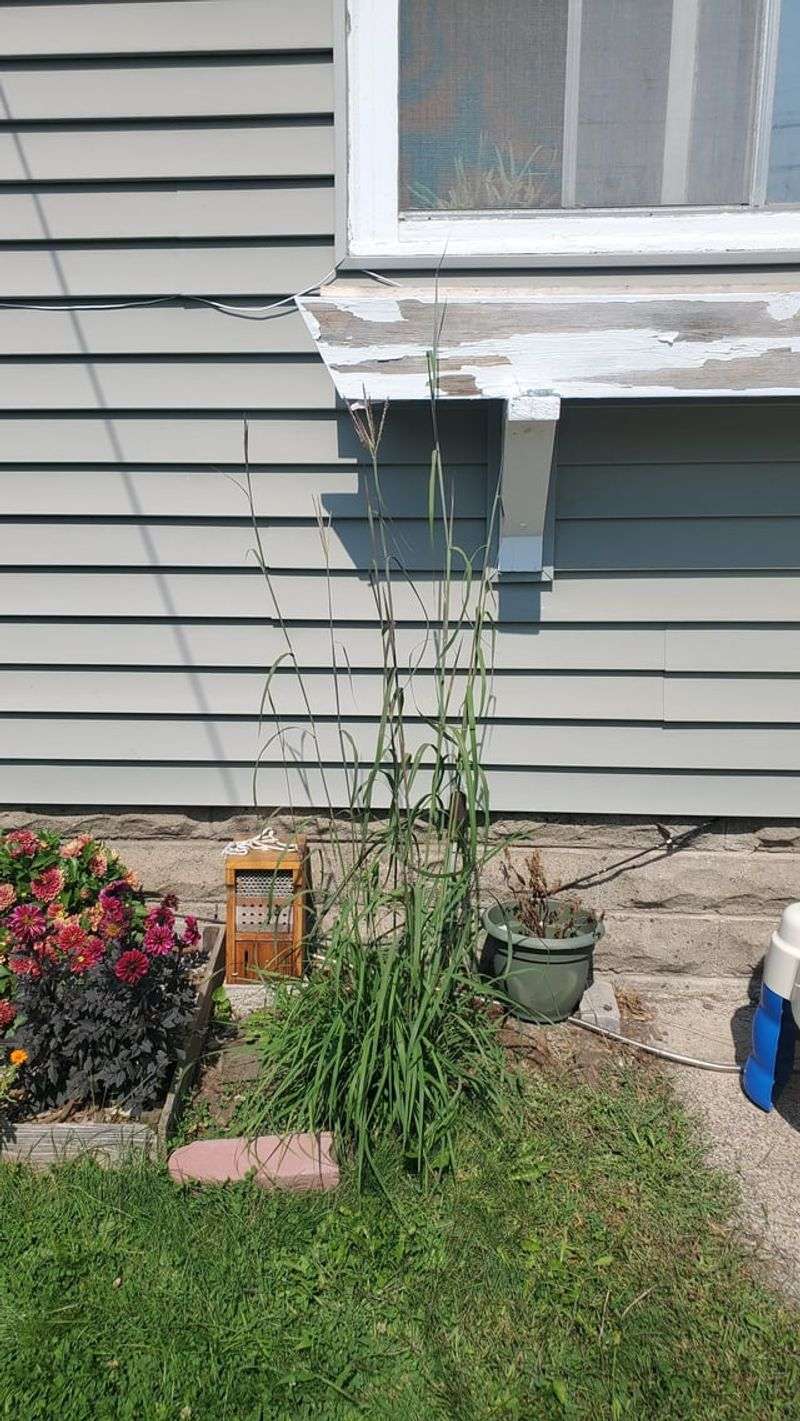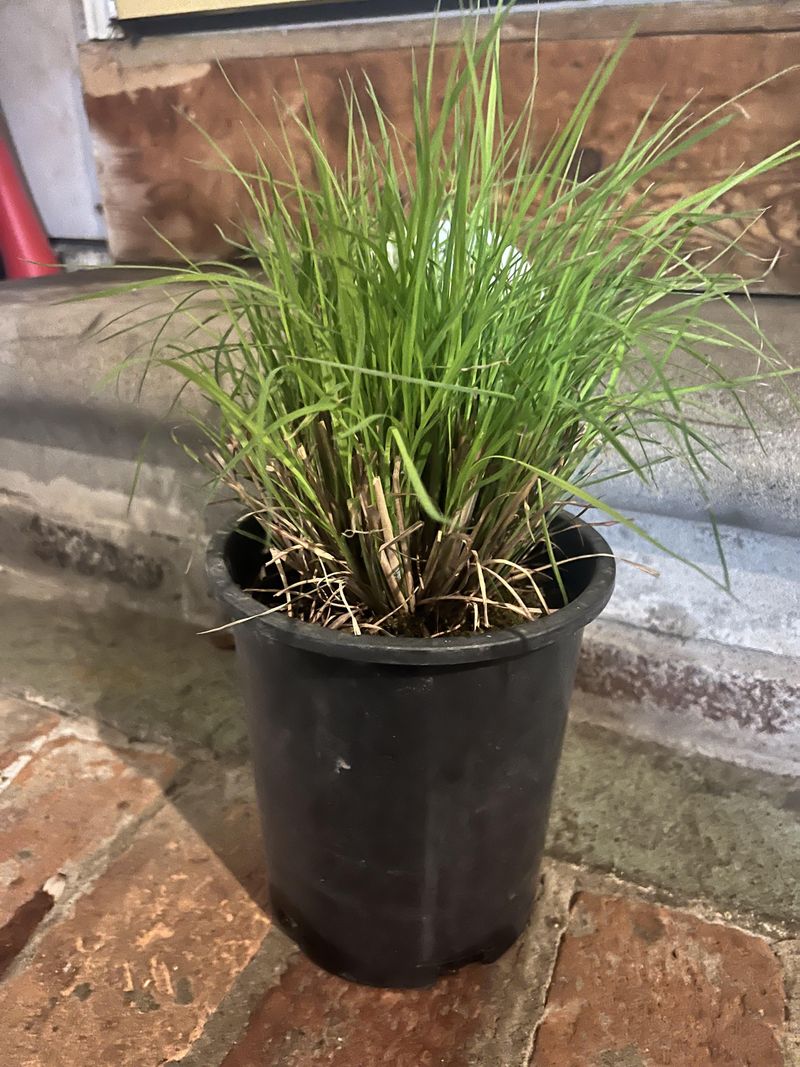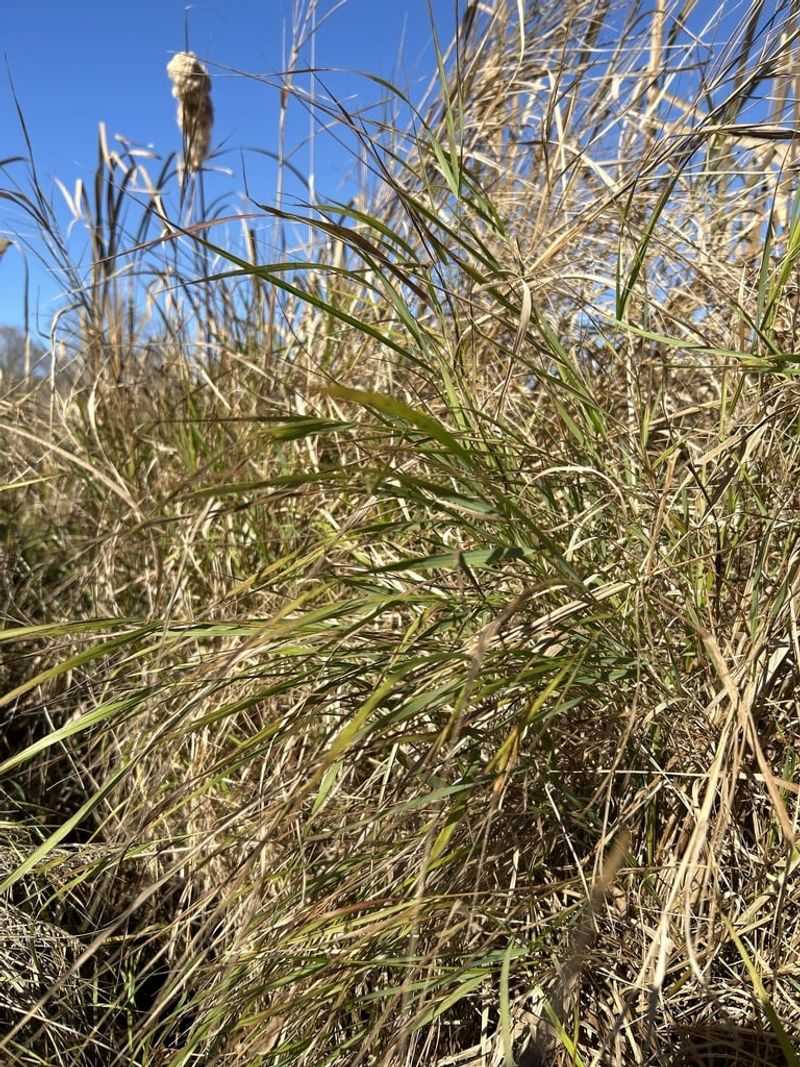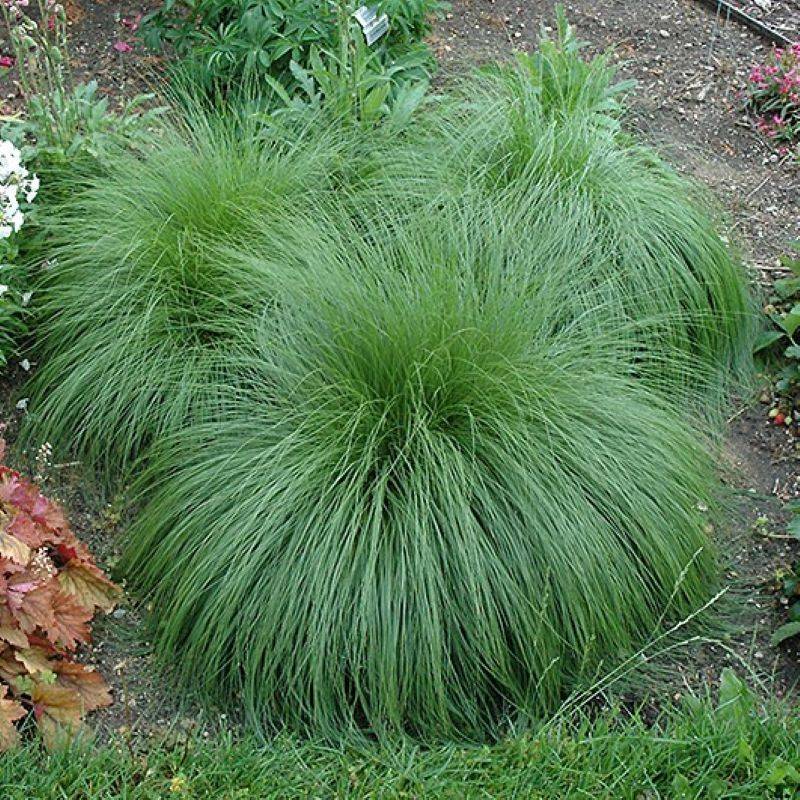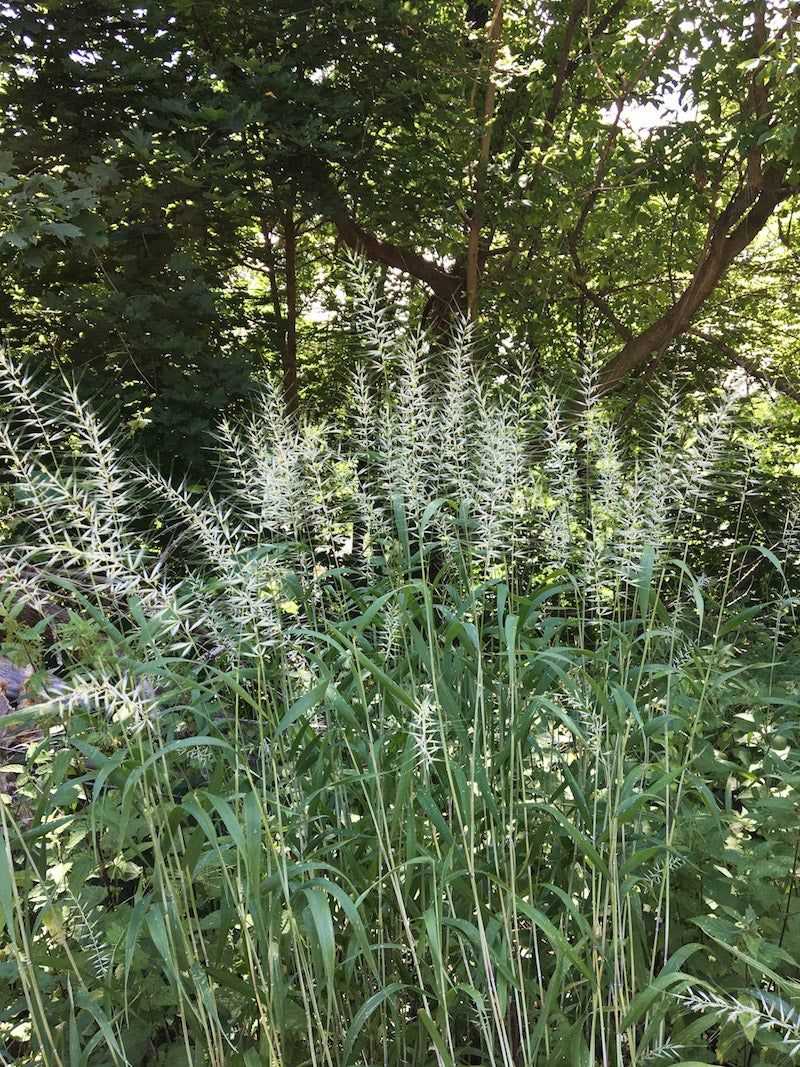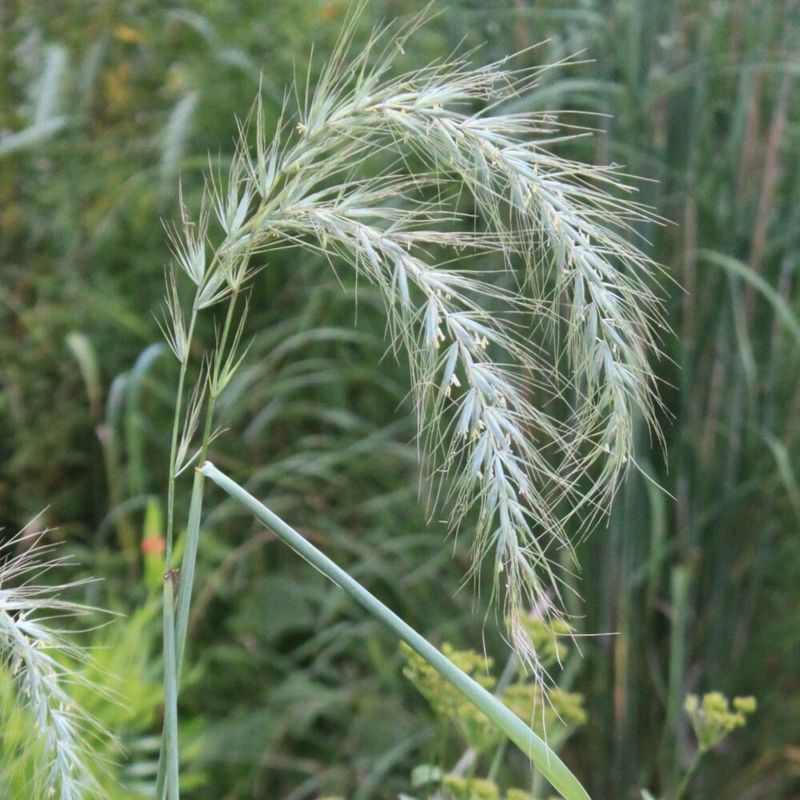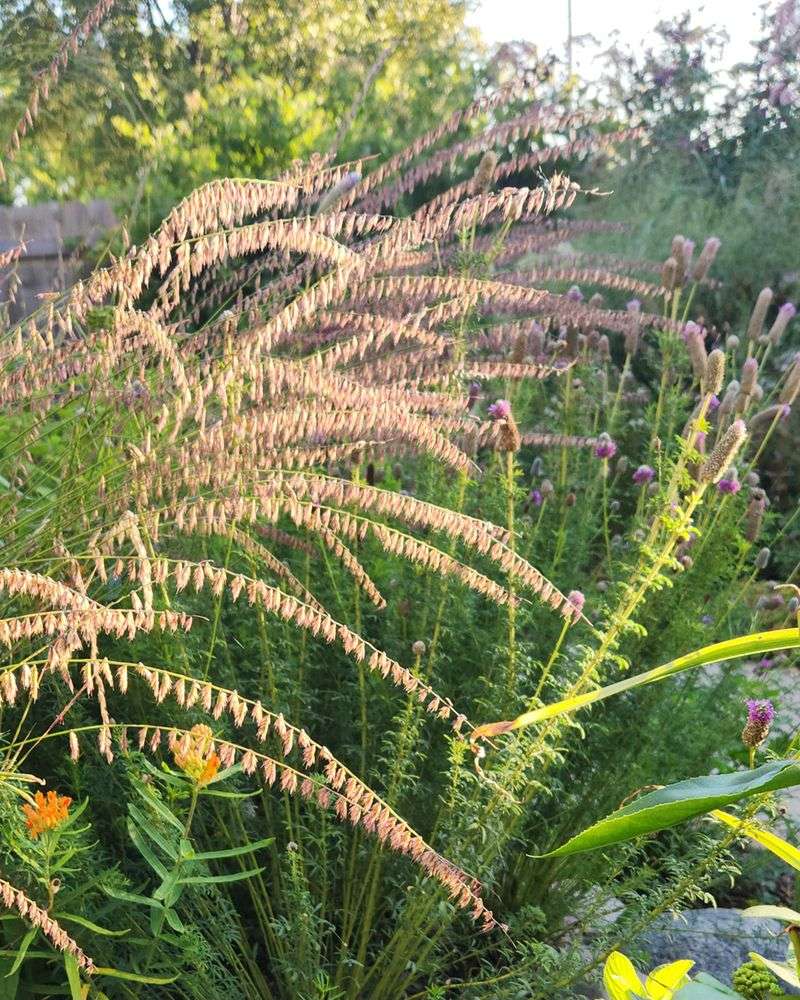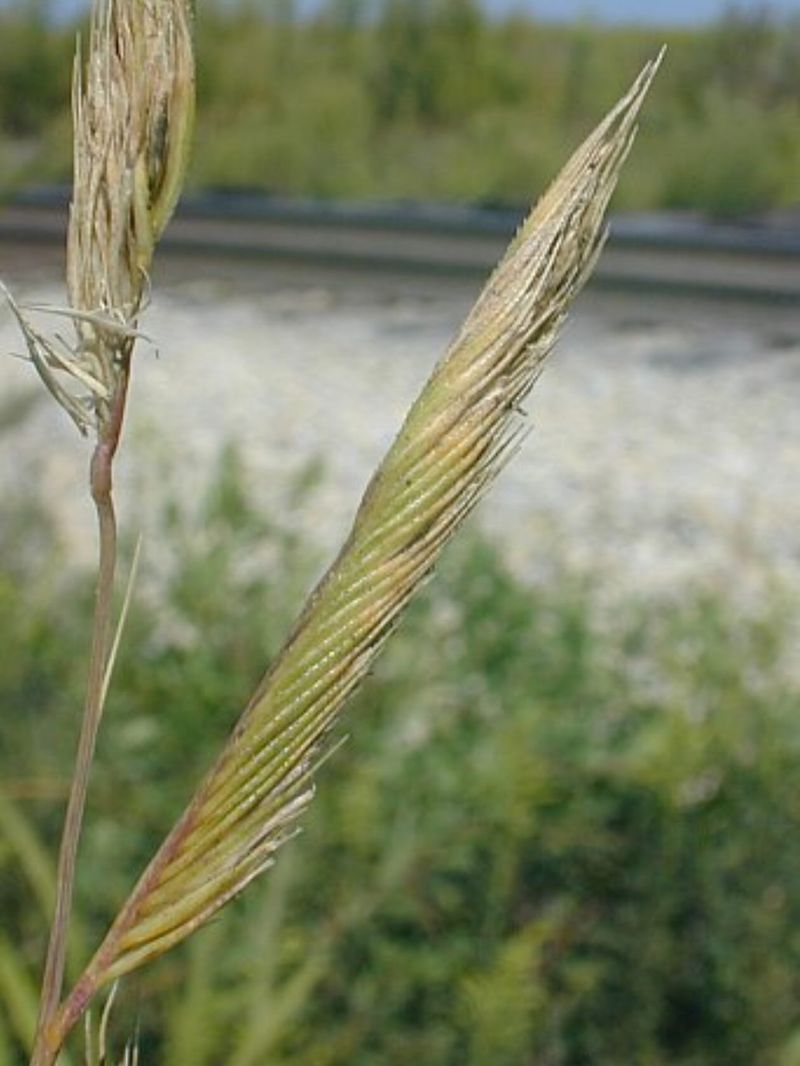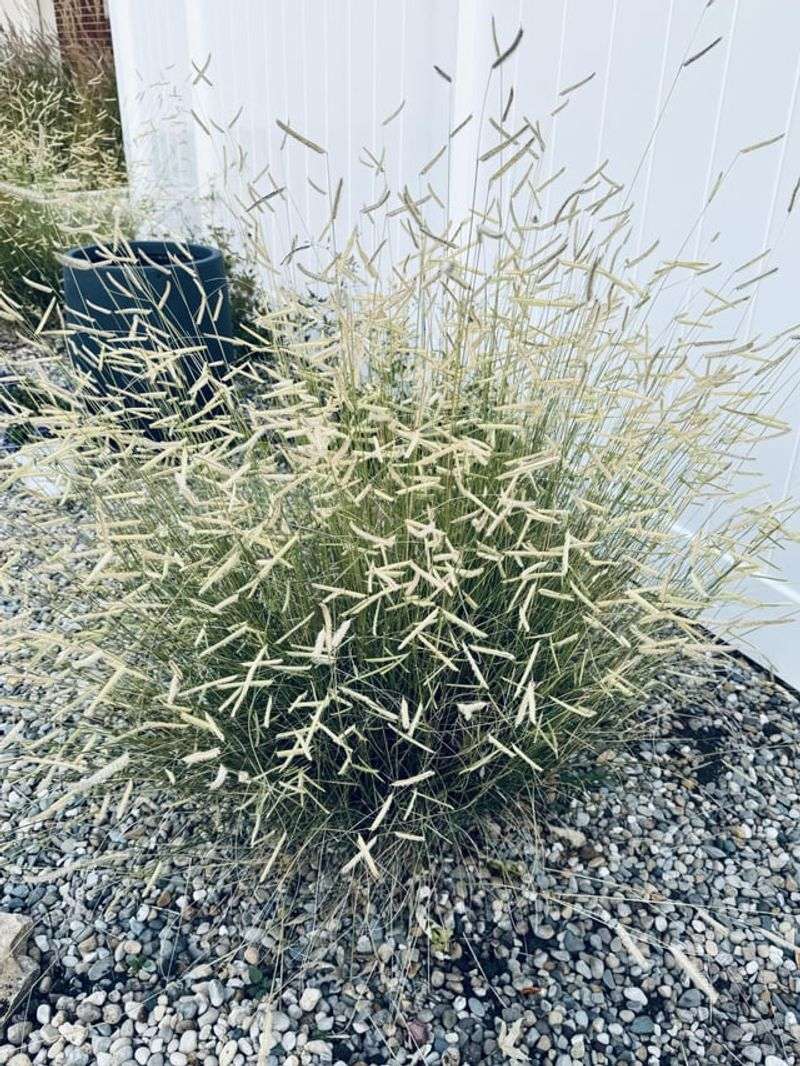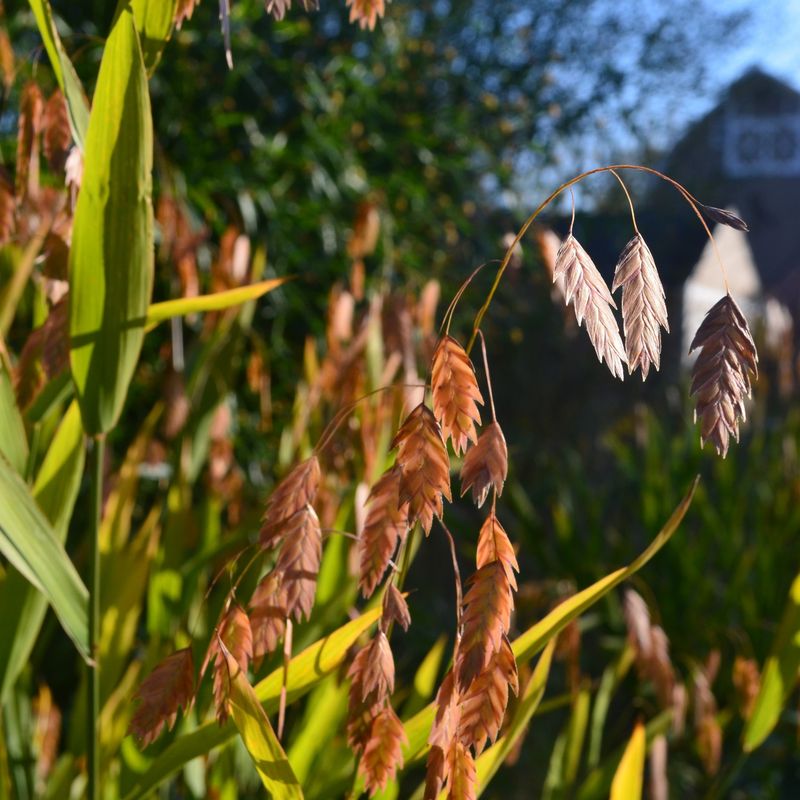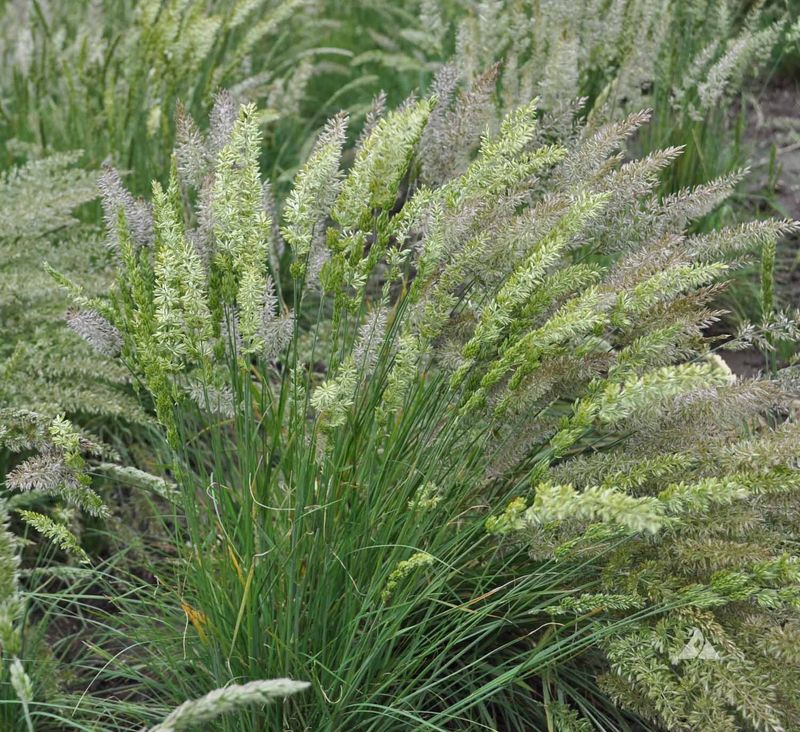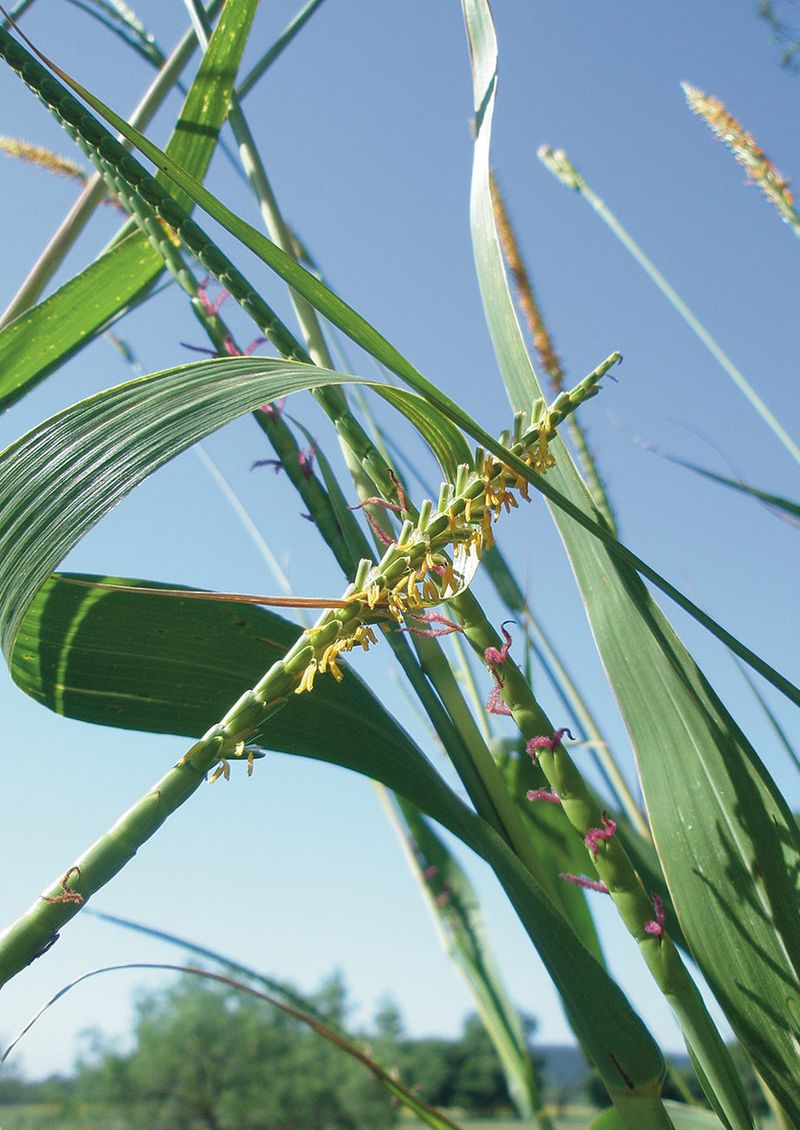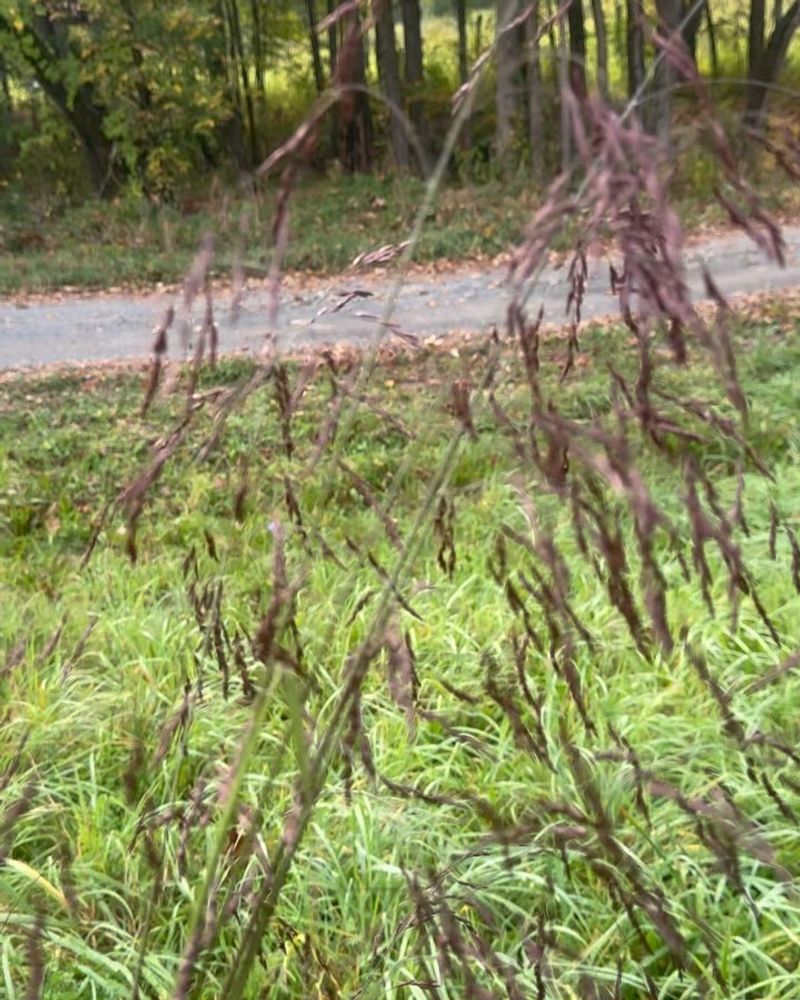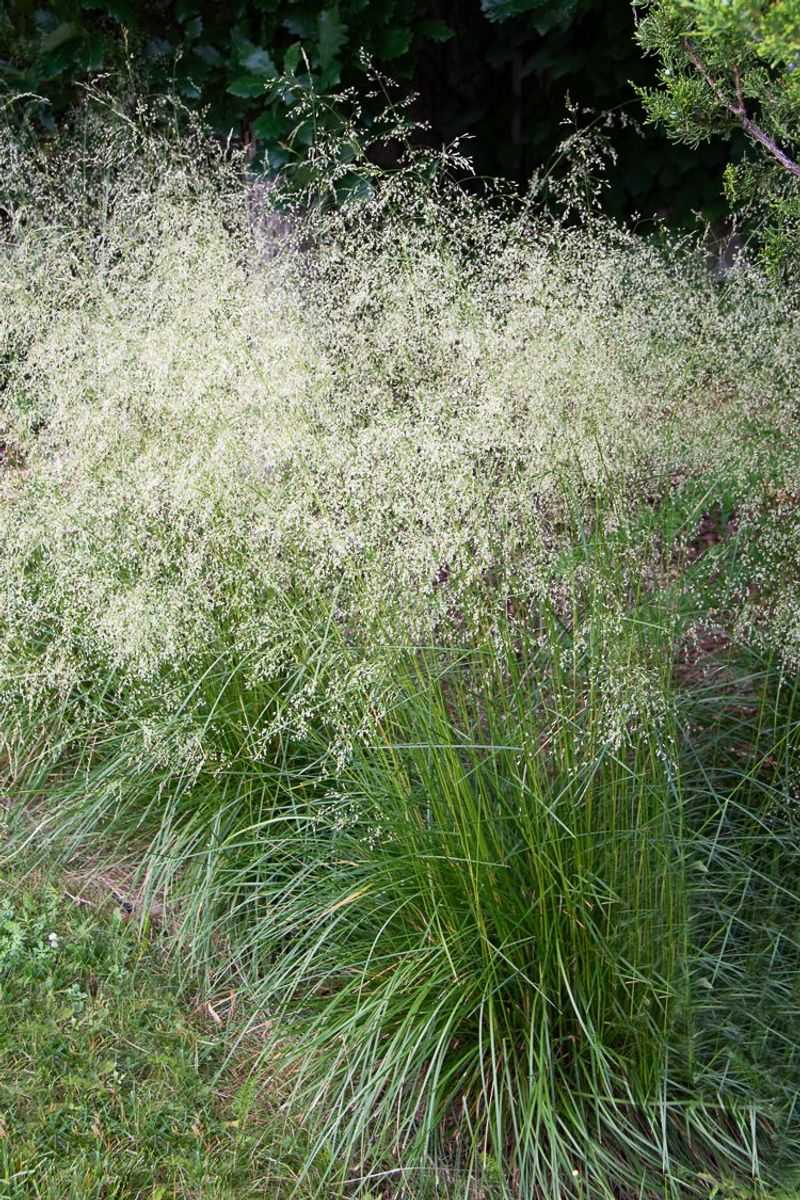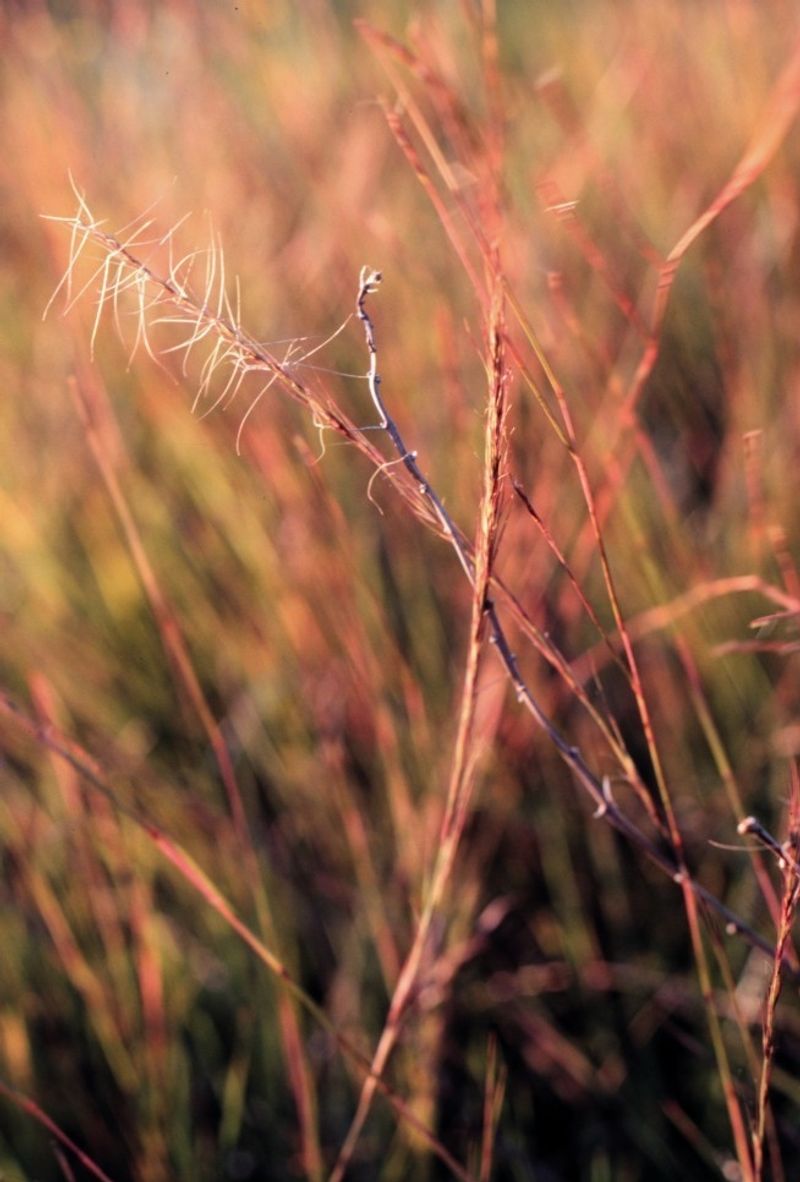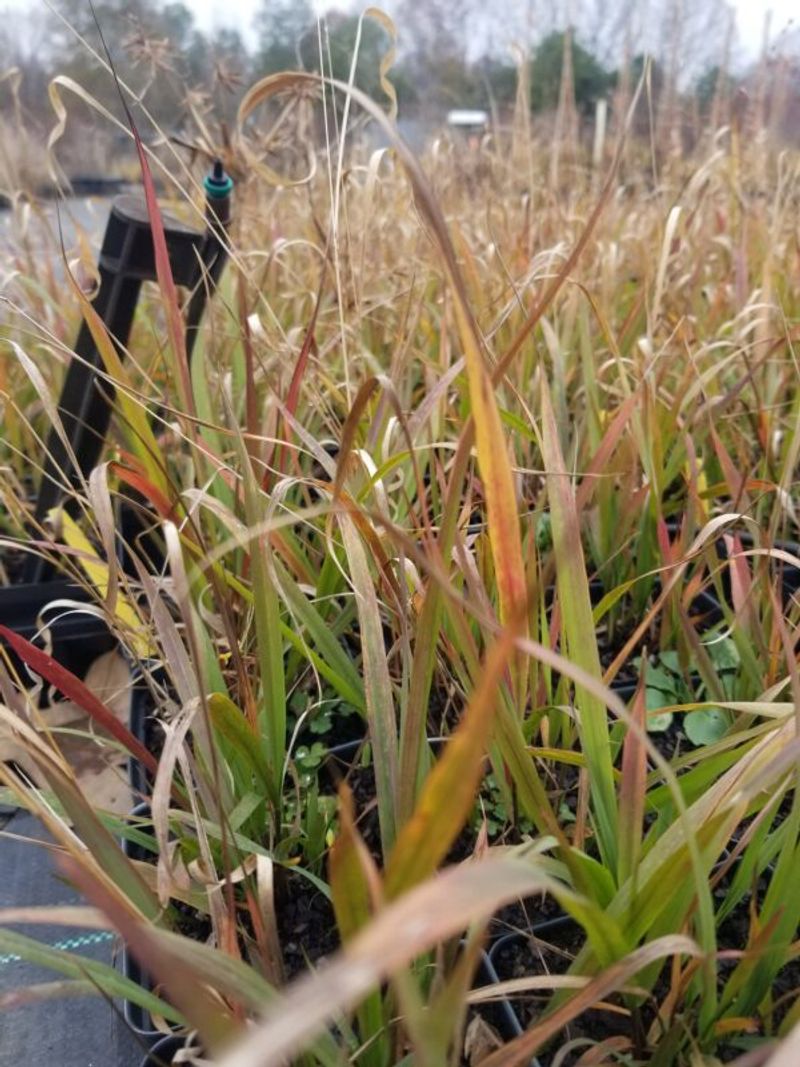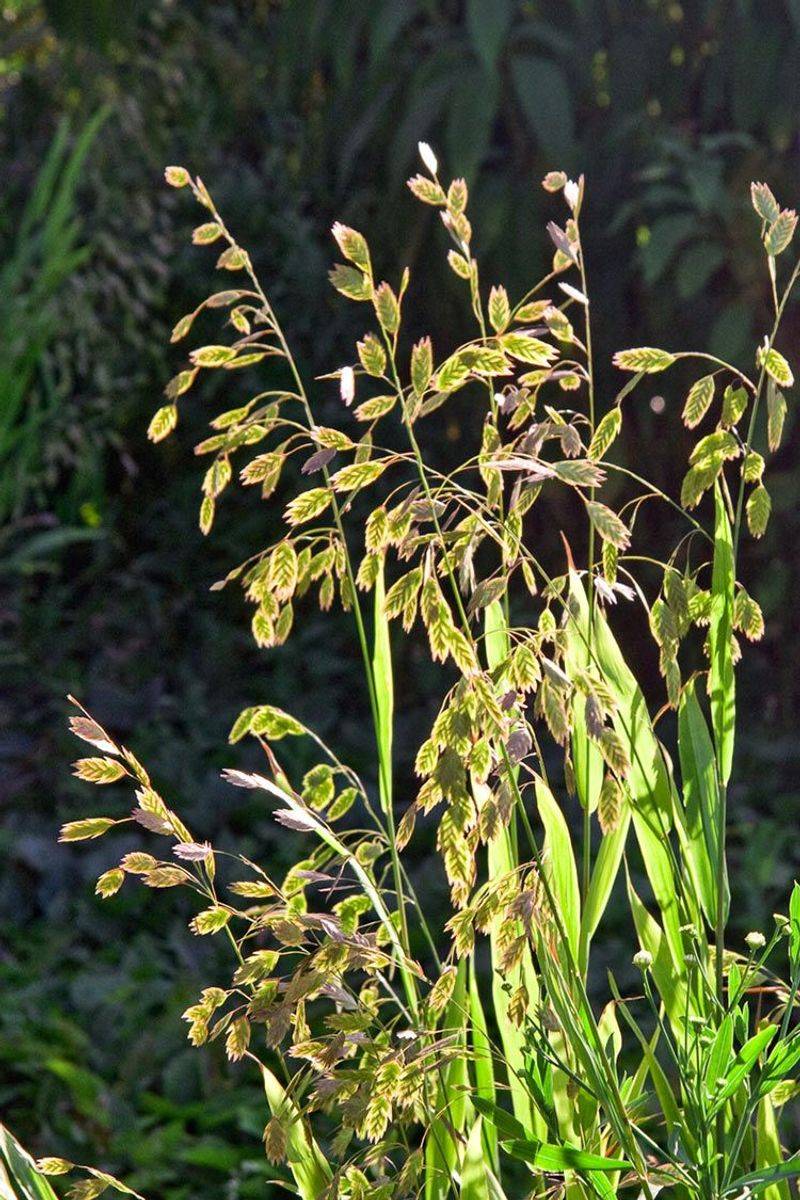When fall rolls into Iowa, most plants begin to brown and settle into dormancy. But a few native grasses defy the trend, holding onto their green well into the season. These hardy varieties bring life to your yard when everything else starts to fade.
Adapted to the Midwest’s shifting climate, these grasses are built to thrive through cooler temps. They add texture, movement, and color to the landscape long after summer blooms disappear. It’s nature’s way of keeping things interesting.
By choosing grasses that stay green longer, you can enjoy a more vibrant yard deep into autumn. It’s a simple way to extend your garden’s beauty and celebrate Iowa’s seasonal charm.
1. Big Bluestem (Andropogon gerardii)
Once covering millions of acres across Iowa’s tallgrass prairies, this grass can reach impressive heights of 6-8 feet. The deep root system helps it stay green longer than many other species.
I’ve noticed Big Bluestem maintaining its color in my garden until the first hard frost hits. The bluish-green stems eventually transform into a rusty red color that many gardeners find appealing.
Growing this grass provides wildlife habitat while connecting your yard to Iowa’s prairie heritage. It thrives in full sun and adapts to various soil conditions.
2. Little Bluestem (Schizachyrium scoparium)
The smaller cousin of Big Bluestem offers excellent drought tolerance and keeps its blue-green color through most of autumn. Growing to about 2-4 feet tall, it’s perfect for smaller yards or border plantings.
Fall brings a slight color shift, but the grass stays largely green until temperatures drop significantly. My neighbors often ask about this grass when they notice it’s still looking fresh while other plants have faded.
Little Bluestem adds texture and movement to gardens while requiring minimal maintenance. Its compact size makes it more manageable than some larger prairie grasses.
3. Indiangrass (Sorghastrum nutans)
The state grass of Iowa, Indiangrass features striking golden-yellow seed heads that contrast beautifully with its green foliage. The leaves often maintain their color until late in the season.
Growing to heights of 3-5 feet, this grass creates a spectacular display when backlit by the autumn sun. Last year, mine stayed green well into October while other plants in my yard were already brown.
Indiangrass attracts birds that feed on its seeds and provides excellent winter interest. The combination of green foliage and golden plumes makes it a standout in fall landscapes.
4. Switchgrass (Panicum virgatum)
Hardy and adaptable, Switchgrass maintains its upright form and green color even as temperatures cool. The airy seed heads create a cloud-like effect above the foliage that moves gracefully in autumn breezes.
In eastern Iowa gardens, I’ve seen this grass remain green until November in protected locations. Different varieties offer slightly different fall color timelines, with ‘Heavy Metal’ and ‘Shenandoah’ being particularly long-lasting.
Switchgrass tolerates wet spots in the yard where other plants might struggle. Its versatility makes it a reliable choice for various landscape situations.
5. Prairie Dropseed (Sporobolus heterolepis)
Fine-textured and fountain-like, Prairie Dropseed forms elegant mounds that stay green well into fall. The delicate seed heads emit a pleasant fragrance some compare to popcorn or coriander.
Growing in my front yard border, this grass maintains its good looks long after many perennials have faded. The arching habit creates a soft, flowing appearance that complements more structured plants.
At just 2-3 feet tall, Prairie Dropseed works well in smaller spaces and formal gardens. It’s one of the more refined-looking native grasses available to Iowa gardeners.
6. Bottlebrush Grass (Elymus hystrix)
Named for its distinctive bristly seed heads that resemble bottle brushes, this shade-tolerant grass is a rare find among natives. The foliage maintains a fresh green appearance even as days shorten.
Unlike many sun-loving prairie grasses, Bottlebrush thrives in woodland edges and partial shade. This makes it valuable for those tricky spots under trees where many plants struggle to grow.
The seeds provide food for birds and small mammals preparing for winter. When planted along wooded edges of Iowa properties, it creates a natural transition zone.
7. Canada Wild Rye (Elymus canadensis)
A cool-season grass that maintains its color longer than many others, Canada Wild Rye features distinctive curved seed heads that arch gracefully. The blue-green foliage provides a different texture in mixed plantings.
Early settlers across Iowa noticed this grass staying green when others turned brown. It establishes quickly, making it useful for stabilizing soil in new garden areas while slower grasses develop.
Growing to about 3-5 feet tall, this grass works well as a background plant. The seeds attract songbirds and provide winter interest in the garden.
8. Sideoats Grama (Bouteloua curtipendula)
Known for its unique seed heads that hang along one side of the stem, Sideoats Grama brings character to fall gardens. The blue-green foliage often persists well into autumn, especially in protected locations.
Medium in height at 2-3 feet, this grass won’t overwhelm smaller spaces. I’ve found it particularly charming when planted in groups where its distinctive form becomes more apparent.
Drought-resistant and low-maintenance, Sideoats Grama makes an excellent choice for busy Iowa gardeners. The small purplish flowers add subtle color before giving way to the dangling seeds.
9. Prairie Cordgrass (Spartina pectinata)
Tall and stately, Prairie Cordgrass features sharp-edged leaves that remain green until quite late in the season. Its height of 4-7 feet makes it a dramatic backdrop plant in larger landscapes.
The spreading nature makes this grass perfect for wet areas where erosion control is needed. Along Iowa’s streams and pond edges, it provides valuable wildlife habitat while maintaining its color.
Fall brings out golden highlights while the base remains green. Just be aware of its spreading tendency – this grass works best where it has room to expand.
10. Blue Grama (Bouteloua gracilis)
Short but mighty, Blue Grama grass forms neat clumps that stay green well into the cooler months. The distinctive eyelash-like seed heads hover just above the foliage, creating visual interest.
At only 12-18 inches tall, this grass fits perfectly in front borders or rock gardens. The compact size doesn’t compromise its fall performance – my patch in central Iowa often stays green until November.
Blue Grama handles foot traffic better than many native grasses, making it useful near garden paths. Its drought tolerance means less watering once established.
11. River Oats (Chasmanthium latifolium)
Featuring distinctive flat seed heads that dangle like fish on a line, River Oats brings unique texture to fall gardens. The broad leaves maintain their green color longer than many other grasses, especially in partially shaded locations.
Growing in my backyard under a maple tree, this grass provides movement and interest when little else is happening in the garden. The seed heads start green then transition to a warm tan while leaves stay fresh.
At 2-3 feet tall, River Oats fits well in medium-sized borders. It self-seeds readily, so removing some seed heads before they mature helps control spreading.
12. Junegrass (Koeleria macrantha)
Despite its early-season name, Junegrass often maintains its neat, compact form and green color well into autumn. The fine-textured foliage forms tidy clumps that work well in formal garden designs.
Growing to just 1-2 feet tall, this grass never overwhelms its neighbors. The bluish-green color provides a cool contrast to warm-toned fall flowers in Iowa gardens.
Extremely drought-tolerant once established, Junegrass thrives in poor soils where other plants struggle. This adaptability makes it valuable for challenging garden spots like slopes or rocky areas.
13. Eastern Gamagrass (Tripsacum dactyloides)
A relative of corn, Eastern Gamagrass forms substantial clumps with broad leaves that maintain their rich green color well into fall. The thick stems and robust growth make it a standout in larger landscapes.
Around wet areas in Iowa gardens, this grass provides structure and stability. My neighbor uses it along a drainage swale where it stays green long after other plants have faded.
Growing 3-8 feet tall, Eastern Gamagrass needs space to show off its impressive form. The unusual seed heads add interest and provide food for wildlife preparing for winter.
14. Purpletop (Tridens flavus)
The open, airy seed heads of Purpletop turn a lovely purple shade while the foliage often remains green into fall. This grass brings a light, floating quality to autumn gardens as seeds catch the low sunlight.
Found naturally in Iowa’s open woodlands and prairie edges, Purpletop combines well with late-blooming wildflowers. The green leaves provide a nice backdrop for purple asters and goldenrod.
Growing 3-5 feet tall, this grass fits into medium-sized borders and naturalized areas. The seeds shimmer beautifully when morning dew catches on them.
15. Tufted Hairgrass (Deschampsia cespitosa)
Forming dense, fountain-like clumps, Tufted Hairgrass features fine-textured foliage that remains green well into the cooler months. The delicate, cloud-like seed heads create a misty effect above the leaves.
In my friend’s Iowa rain garden, this grass maintains its fresh appearance long after other plants have declined. The evergreen tendency makes it valuable for winter interest as well.
Growing 1-3 feet tall, Tufted Hairgrass works well in both formal and naturalistic designs. It tolerates periodic flooding and seasonal wet spots that challenge many other plants.
16. Prairie Threeawn (Aristida oligantha)
An often-overlooked native, Prairie Threeawn features distinctive three-pronged seed awns that catch the light beautifully. The fine-textured foliage maintains its green color surprisingly late into the season.
Short in stature at 1-2 feet, this grass works well in rock gardens and poor soil areas across Iowa. The seed heads start purplish then fade to tan while the base stays green.
Extremely drought-tolerant, Prairie Threeawn thrives in challenging conditions where other plants fail. Its unique seed structure makes it an interesting addition to dried arrangements.
17. Woodoats (Chasmanthium laxum)
Less known than its cousin River Oats, Woodoats features smaller, more delicate seed heads and narrower leaves that often retain their green color into late fall. The graceful form adds movement to shady garden spots.
Perfect for woodland gardens and shaded borders in Iowa landscapes, this grass tolerates conditions that challenge many natives. The slender stems dance in autumn breezes, creating a peaceful atmosphere.
Growing 2-3 feet tall, Woodoats fills the difficult niche of shade-tolerant native grasses. The seeds provide food for birds while maintaining visual interest through the season.
18. Northern Sea Oats (Chasmanthium latifolium)
Often confused with River Oats, Northern Sea Oats features similar flat, dangling seed heads but with subtle differences in growth habit. The broad leaves frequently maintain their green color well into the cooler months.
Thriving in partial shade across Iowa gardens, this grass brings movement and sound as seeds rustle in autumn winds. The transition from green to copper seed heads happens gradually, extending the season of interest.
At 2-3 feet tall, Northern Sea Oats works well under trees and along woodland edges. The seeds self-sow readily, creating natural drifts over time.


